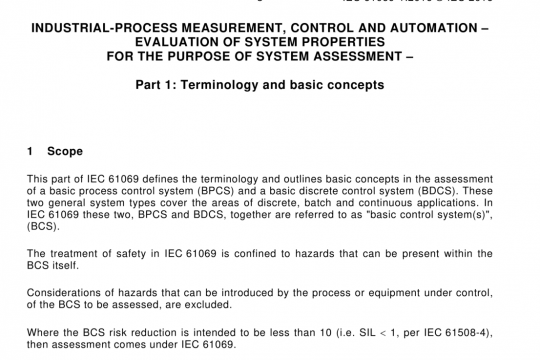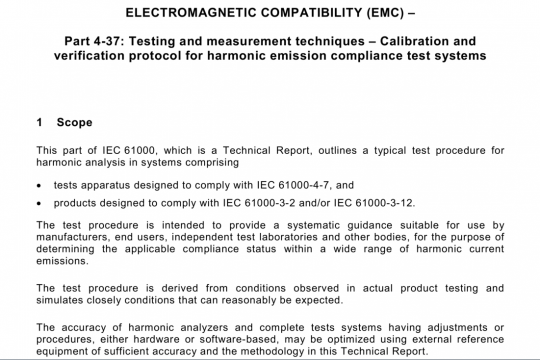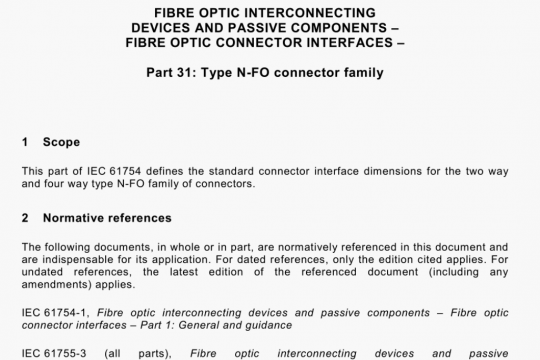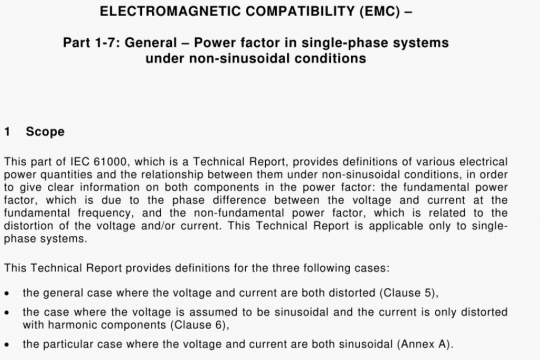IEC 60958-4-2 pdf free download
IEC 60958-4-2 pdf free download.Digital audio interface – Part 4-2: Professional applications – Metadata and subcode.
5.3 Implementation
5.3.1 Implementation levels
5.3.1.1 General
The following two implementations are defined: standard and enhanced. These terms are used to communicate in a simple manner the level of implementation of the interface transmitter involving the many features of channel status. Irrespective of the level of implementation, all reserved states of bits defined in 5.5 shall remain unchanged.
5.3.1.2 Standard level
The standard implementation provides a fundamental level of implementation which should prove sufficient for general applications in professional audio or broadcasting. In standard implementation, transmitters shall correctly encode and transmit all channel status bits in byte 0, byte 1, byte 2, and byte 23 (CRCC) in the manner specified in this standard.
NOTE This note applies to the French language only.
5.3.1.3 Enhanced level
In addition to conforming to the requirements described in 5.3.1.2 for the standard implementation, the enhanced implementation shall provide further capabilities.
5.3.2 Transmitter requirement
Transmitters shall encode channel status to follow all the formatting and channel coding rules to one of the two specified implementation levels. All transmitters shall correctly encode and transmit channel status with the correct juxtaposition with respect to the Z preamble or block start (see lEO 60958-1).
5.3.3 Receiver requirement
Receivers shall decode channel status as required by their application. Receivers shall interpret CRCC errors as needing to reject the channel status block with the error. Receivers shall not interpret any errors in a channel status block such as CRCC or block length errors as a reason to mute or alter the audio content.
The purpose of the CRCC in byte 23 is to indicate corruption of the channel status block due to switching or editing effects (for example). Due consideration should be given to the implications of any action on downstream equipment and the associated system in general.
5.4 Documentation
Documentation shall be provided describing the channel status features supported by interface transmitters and receivers.
To promote compatible operation between items of equipment built to this standard it is necessary to establish which information bits and operational bits shall be encoded and sent by a transmitter and decoded by an interface receiver.
5.5 Channel status content
5.5.1 General
The specific organization is presented in Figure 1. Multiple-bit quantities are shown in the tables with the most significant bit to the left. Note that the order in which the bits are transmitted is therefore from right to left.
The following considerations for basic audio parameters have to be taken into account.
• The indication that the audio sample words are not in linear PCM form requires that the validity bit be set for that channel. See 5.6 and IEC 60958-4-1.
• The indication of sampling frequency, or the use of one of the sampling frequencies that can be indicated in this byte, is not a requirement for operation of the interface. The 00 state of bits 6 to 7 may be used if the transmitter does not support the indication of sampling frequency, the sampling frequency is unknown, or the sample frequency is not one of those that can be indicated in this byte. In the latter case for some sampling frequencies byte 4 may be used to indicate the correct value.
• When byte 1, bits ito 3 indicate single channel double sampling frequency mode then the sampling frequency of the audio signal is twice that indicated by bits 6 to 7 of byte 0.IEC 60958-4-2 pdf download.




